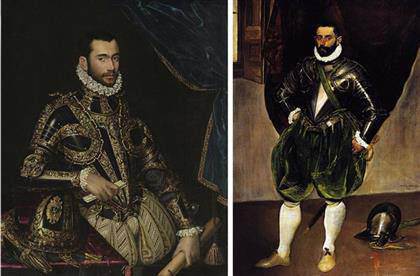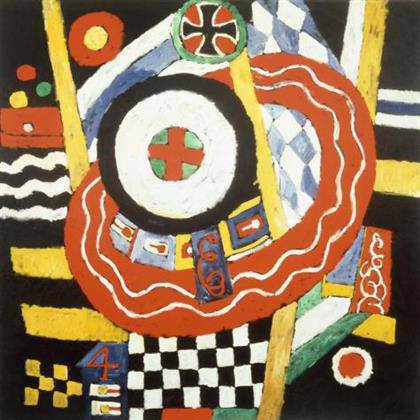
Left: Scipione Pulzone (c. 1540/42–98), “Jacopo Boncompagni”, 1574, oil on canvas, private collection; courtesy of Jean-Luc Baroni Ltd.; photo: Michael Bodycomb
Right: El Greco (1541–1614), “Vincenzo Anastagi”, c. 1575, oil on canvas, The Frick Collection; photo: Michael Bodycomb
Men in Armor: El Greco and Pulzone Face to Face
Frick Collection videos
El Greco and Pulzone Face to Face – Frick Collection To mark the 400th anniversary of El Greco’s death, the Frick Collection pairs his ‘Vincenzo Anastagi’ with the rarely seen Jacopo Boncompagni by the artist’s Roman contemporary Scipione Pulzone. August 5 through October 26, 2014.]]>
Source: Frick Collection
With its gleaming, highly detailed polish, Pulzone’s portrait of Boncompagni, on loan from a private collection, epitomizes the elegant style that dominated high-society portraiture in Rome during the last quarter of the sixteenth century. El Greco’s painterly portrayal of Anastagi stands in stark contrast, underscoring the artist’s innovative departures from convention.
For his portrayal of Anastagi, El Greco would have looked to examples of military portraits, the most recent, successful likeness of this type being Pulzone’s portrait of Boncompagni. Pulzone was at this time the most sought-after portrait painter in Rome, having portrayed dignitaries of the highest rank, including Pope Pius V, Pope Gregory XIII, and Cardinal Alessandro Farnese. The artist also enjoyed personal relationships with powerful patrons; his first son, Giacomo, was Boncompagni’s godchild.
El Greco undoubtedly would have been aware of Pulzone’s splendid likeness. The three-quarter-length portrait communicates Boncompagni’s high status with the detailed depiction of his opulent armor, meticulously groomed beard, and elegant hands. According to the inscription on the piece of paper in the sitter’s right hand, the portrait was executed in 1574, only about one year before El Greco painted Vincenzo Anastagi. In his left hand, Boncompagni holds a wooden letter case, which suggests that the painting was probably commissioned when Jacopo was sent on a diplomatic mission to Ferrara to greet Henri de Valois, the future French king, Henry III.
In the portrait, Pulzone achieves lifelike qualities through painstakingly rendered details. Traces of brushwork are suppressed in order to gain a highly finished surface that adds to the portrait’s sense of refinement. Boncompagni’s dazzling armor displays techniques of embossing, damascening, bluing, and gilding. Pulzone’s depiction of the breeches—woven with gold and silver threads—shows an equal degree of precision. The light bouncing off the breastplate lends tactile effect to the polished surface of the metal. Pulzone’s masterful depiction of the play of light in the smallest details, such as on the fringe of the curtain, enhances the illusionistic effect.
Related content
“El Greco and Modern Painting” at the Prado Museum (exhibition, 2014)
Follow us on:


